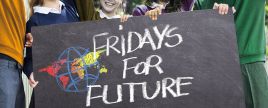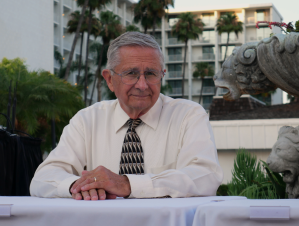Imagine that you live in a house with a window that looks out on the view above. I suspect, whether you would prefer oceans or mountains or woods or city scape, most of you would think this view is a pretty good one. Beautiful, in fact. As you look at it, what do you notice? The mountains in the background? The pond? The trees and expanse of green? The sunset glow? How might it make you feel to be sitting in your own house looking out at that view? Would you enjoy and take comfort from such a view?
Now let us consider some of the aspects of that landscape that might not be apparent from this window. Might there be deadly-disease-carrying mosquitoes around the pond? Ticks in the grass? Poisonous mushrooms growing under those trees? Hornets ne![]() sts? Snakes? Wolves or coyotes or bears that could attack if you went out, or gobble up one of your pets? Maybe a fast-moving storm with lightning that would start a wildfire in the woods?
sts? Snakes? Wolves or coyotes or bears that could attack if you went out, or gobble up one of your pets? Maybe a fast-moving storm with lightning that would start a wildfire in the woods?  Are any of these things likely to come immediately to mind on looking out this window?
Are any of these things likely to come immediately to mind on looking out this window?
If you were to say yes, those are exactly the sorts of thoughts such a view would engender, I might advise you to start looking for a good therapist. It’s true that any of those things might be in the world outside that window, in fact some of them almost certainly are, but to perceive mostly threats in a view of such calm and beauty would suggest an unhealthy level of paranoia.
Now think about the other kinds of windows in our world: television, email, Face Book and Twitter feeds, cell phones, or even, here or there a newspaper. And think about the view they show us of the world just outside, or maybe beyond (or even very, very far beyond) our immediate surroundings. There is so much focus on the threats, whether there is anything we can do about them or not, that it’s difficult to see anything else. Statistics show levels of anxiety and depression skyrocketing in many or most of what are called “the developed” countries. If every time you looked at the scene above you could see only images of ticks and predators and wildfires, why wouldn’t you be anxious and depressed?
Some years ago I gave a talk about “Good News” at NAGC. Back then it was possible, with some persistent searching, to find compilations of positive stories from around the world, in spite of the “if it bleeds it leads” pattern of news programming. One major network in the United States (I believe it was ABC then) had newly decided to end each half hour national news program with one short positive story. Others now have taken up that policy. Most of these short positive stories actually take fewer minutes from the allotted broadcast time than a single commercial break, while before that final story, almost every other segment tells of catastrophe, violence, political struggle, warfare, medical threat, injustice, accident, mass shooting, storms, earthquakes, or other horrors. And now “the news” provided by our media, isn’t only half an hour in the evening; it’s 24/7 and very difficult to avoid.
Parents who attempt to limit their children’s exposure to this kind of news coverage are fighting a losing battle once the kids start school or get their own phones. And the brighter kids are the earlier they begin to take an interest in what goes on outside their own homes or neighborhoods. It isn’t that this is an entirely new phenomenon. When our older boys were kids, one of them came into the living room one night when we happened to be watching an old war movie. He started to tell us something and then said, “Never mind, I can tell you after the news is over.” During his whole lifetime the evening news had devoted much of its air time to the war in Vietnam.
But now it is next to impossible to escape being deluged with the worst of human experience, no matter where it is happening in the world. I remember when parents were advised to tell their children, when there was shocking news from the other side of the world, “Don’t worry, it isn’t happening here.” And I pointed out to parents then that gifted kids know that much of this isn’t happening here, but it isn’t themselves and their own families they are worried about. They worry about kids wherever they may be threatened, even on the other side of the world. And they worry about the apparent depravity of the human species, especially when that is very nearly all they “see” out the technological windows on the world.
And of course, now, they hear about every school shooting and instead of the “duck and cover” nonsense method my generation was given in school to protect ourselves from a nuclear bomb, they are given “active shooter” drills from kindergarten on. In addition, along with Greta Thunberg, they worry about the fate of the planet they are going to inherit. “Will there still be a world for me to grow up in?” many of them are asking. And it can be especially scary when they see that much of our culture goes on as if none of this were happening.
If “what you see is what you get,” we need to consider not just what we see, but how we look. It is possible to focus more attention on what is going right. We can begin the effort to see beauty and caring and the willingness to help.
Instead of focusing on how much school violence there has been, we could, for instance, use the resources of the internet to estimate how many schools there are in this country and consider how many kids, therefore, have not faced gun violence in their schools. It doesn’t diminish the tragedy of what has happened, of course, or the need for positive change—it just helps change our perspective. We’re told it is foolish to say “It can’t happen here,” but it’s also foolish to allow every child to set out for school expecting that at any moment it may happen here,
Both parents and schools can make a constant, serious, and determined effort to find and report to our kids ( and show them how to go looking for) stories of the massive efforts on the part of real humans to counteract the threats that exist in the world. Focus whenever and wherever possible on the other aspects of the view through our windows. There are organizations formed to work on most of the problems we face. As Mr. Rogers’s mother told him, watch the helpers. For every story of catastrophe there are more stories (though not always as easy to find) of individuals, organizations, often massive nationwide efforts to help. Encourage kids to find ways they, too, can get involved.
and show them how to go looking for) stories of the massive efforts on the part of real humans to counteract the threats that exist in the world. Focus whenever and wherever possible on the other aspects of the view through our windows. There are organizations formed to work on most of the problems we face. As Mr. Rogers’s mother told him, watch the helpers. For every story of catastrophe there are more stories (though not always as easy to find) of individuals, organizations, often massive nationwide efforts to help. Encourage kids to find ways they, too, can get involved.
Studies were done back during the Cold War when the threat of a Russian nuclear first strike made the possibility of nuclear winter and human extinction seemed very, very real, that showed children whose parents had themselves become involved in organizations working for peace were less likely to be afraid than children whose parents only watched the news and talked about it. Any actual action, no matter  how small, gave their children a sense of hope and possibility. Often, now, it is kids who are pushing the adults to do something! We need to encourage that and join them when we can.
how small, gave their children a sense of hope and possibility. Often, now, it is kids who are pushing the adults to do something! We need to encourage that and join them when we can.
How we choose to look has a great deal to do with what we see, of course. It is not denial to change our focus to find the best in humanity, and more often than not turn off the news that focuses on the worst.
Part II of this post will come soon…
P.S. New addition: Here is one of the “good news” sources: https://www.findhorn.org/programmes/an-introduction-to-project-drawdown/



